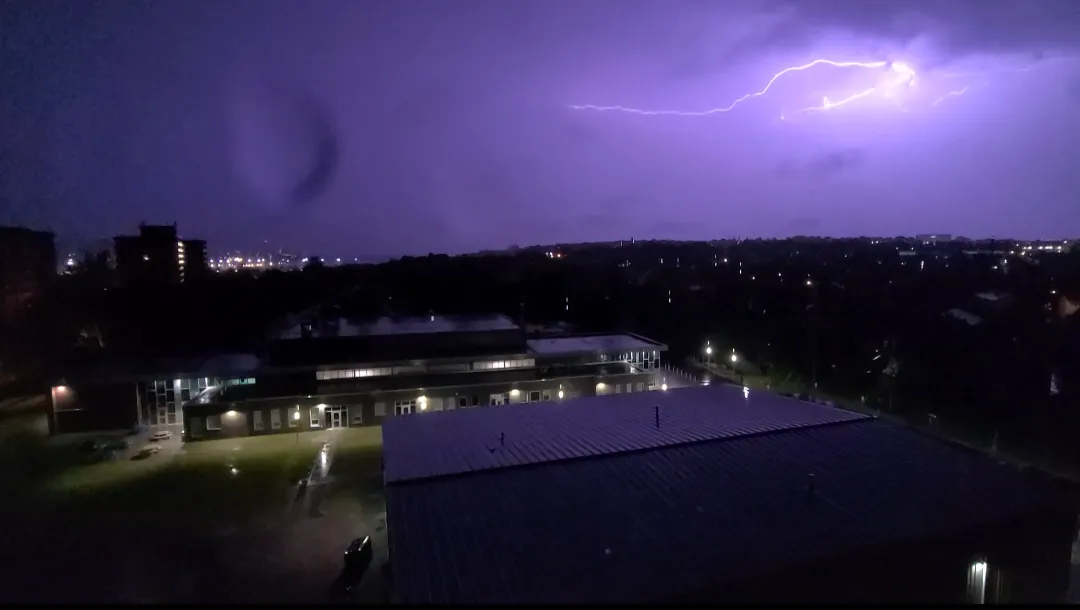**** Info via Environment Canada
Different types of lightning
Lightning is a high-current electric discharge that occurs when charges build up in the atmosphere. Ice crystals and water droplets in a cloud become charged as they rub together. When the charge build-up is sufficient, it is discharged in the form of a lightning bolt. That’s why thunderstorms are not limited to summer but occasionally occur in winter, and whenever the air mass is sufficiently unstable to allow static charges to build up.
Lightning discharges are categorized into three types: cloud-to-ground, in-cloud and cloud-cloud discharges.
Cloud-to-ground strikes
Cloud-to-ground strikes are the most studied type of lightning because they have the greatest impact on us. The lightning strike can be negatively or positively charged; like a tree, lightning contains branches that define the direction of propagation. It is the polarity of the discharge that will affect the way lightning spreads and branches out. Normally, negative charges accumulate at the bottom of a cloud, while positive charges accumulate at the top.

Negatively charged lightning descends from the bottom of the cloud to the ground. Lightning tries to find its path as the negative and positive charges meet mid-air. When the negatively charged branch connects with the positively charged branch, a high-voltage electric current creates lightning. Negatively charged lightning strikes make up for about 95% of all cloud-to-ground strikes.
Positively charged lightning originates from the top of a cloud. They are more common in the winter when the clouds producing them are not as high. Positive lightning charges are easily identified by their lack of branching near the ground. They also carry a higher charge and last longer than negative strikes, and, as a result, can create more damage.
Positively charged lightning with a single branch to the ground. May 2016, Vernon, BC. Source: Andrew Giles, Environment and Climate Change Canada.
Cloud-to-cloud lightning
Cloud-to-cloud lightning is the most common type of lightning. It happens when a negatively charged cloud finds a positively charged cloud, and as opposites attract, the lightning travels from one cloud to another. There are an estimated three to five cloud-to-cloud pulses for every cloud-to-ground stroke.
Cloud-to-cloud lightning pulses.
In-cloud lightning
In-cloud lightning occurs between areas of different potential energy in the cloud (travels from positive to negative cloud charges). The lightning can leave the cloud and reach the sky or stay in the cloud, but it never touches the ground. This type of lightning looks like a bright flicker in a cloud.
Be wary!
There is a common misconception that lightning will always strike the tallest objects. While tall objects are more likely to get struck, lightning will strike when it makes contact with a positively charged branch from the ground. Typically, there are multiple positively charged branches, but it’s impossible to predict which one will connect with the negatively charged branch from the cloud. Another common misconception is that lightning does not strike twice. This is not true. On average, the CN Tower in Toronto is struck more than 75 times yearly!
Remember, when thunder roars, go indoors!
(cover photo via Josh Brown)




